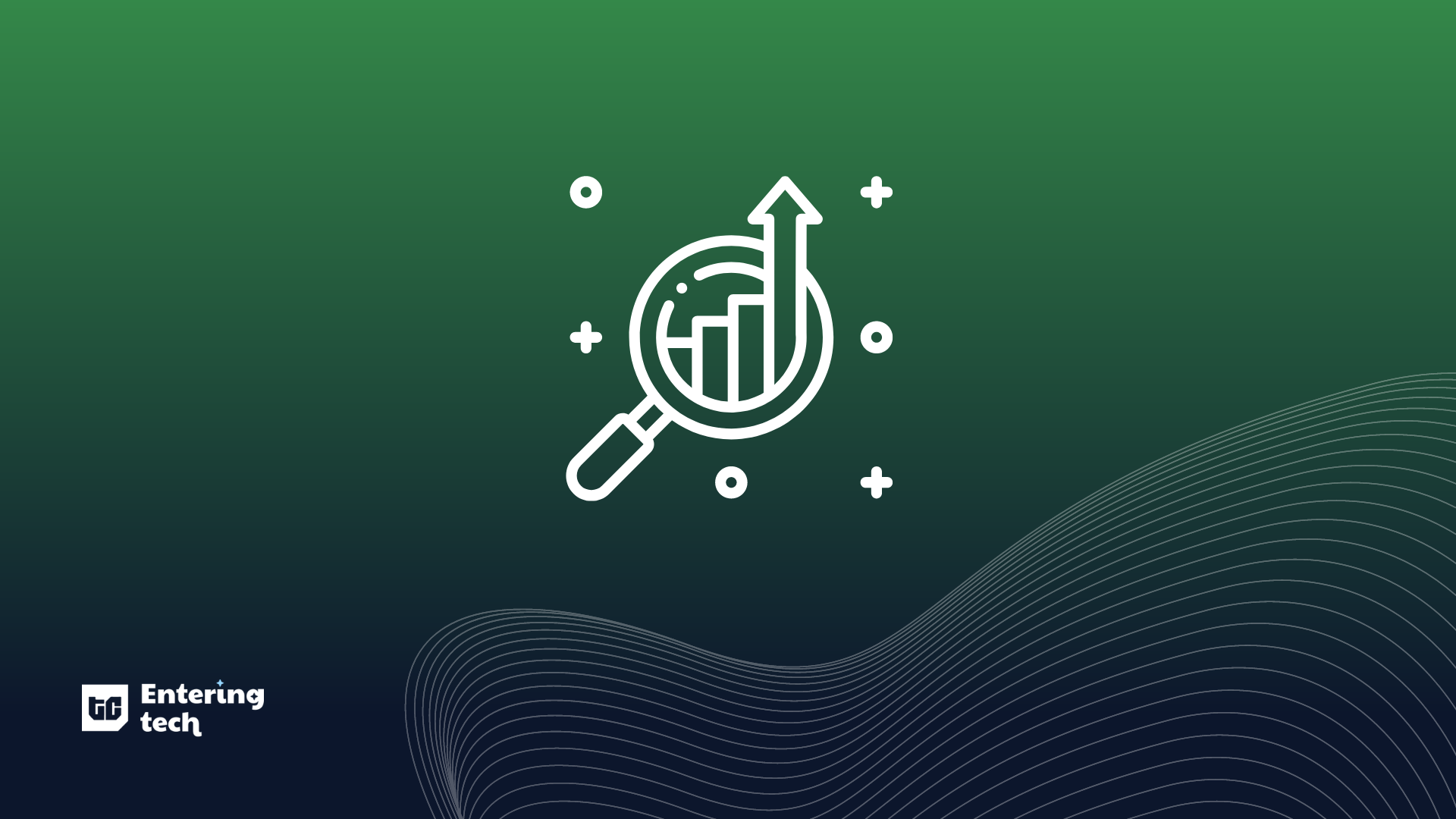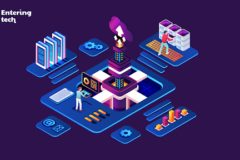
02 || November || 2022
View in BrowserBrought to you by

#Issue 010
How to become a
data analyst
Greetings, ET readers 🖖🏾
Big Cabal Media has a small, but mighty department—TechCabal Insights or “TC Insights”.
The TC Insights team is obsessed with data, and rightly so because data is the new oil. Most people are afraid of data because they think it’s only about complex numbers and calculations, but there is so much more to data than numbers.
Think of data as a dance between research and results.
My second favourite Apple Music playlist is “Favorites Mix”. Apple—using AI— curated this playlist for me based on the songs I love to listen to every day. Early-stage startups cannot afford to deploy AI technology to power product research, but they can hire intelligent data analysts. If you have a naturally curious mind and a proclivity for research, then you should consider a career in data analysis.
by Koromone Koroye & Timi Odueso.

Tech trivia questions
Today’s trivia is inspired by the hot Twitter news that has been trending all week.
- How many verified accounts are on Twitter?
- What is the name of the Twitter bird?
Answers are at the bottom of this newsletter.

Who is a data analyst?
It’s that time of the year when companies and governments are gearing up for yearly reports.
Very soon, we’ll see stats that tell us how many people did what, when, and why.
Take this edition of TC Daily, for example, where Timi talks about startup funding in October 2022. In that edition, Timi shares that North African startups had the highest raise per region, while fintech had the highest total raise per sector.
How do we get these kinds of stats and data? It’s via data analysis, the work of data analysts!
Data analysts are techies who take raw data, clean it, and extract actionable relevant information from it. They make sense of numbers and data, and tell stories with it. You know all those excel sheets with rows and rows of information? Data analysts take that data and simplify it for everyday people.
💡 Data analysis is how Professor X uses Cerebro to scan all living things on earth, and differentiate between mutants and human beings. Cerebro, in the comics, can even be used to classify mutants based on their power levels.
Data analysts are the ones who can find out if popularly spewed beliefs like “Apple should build offices in Africa because Africans buy the most iPhones” or “Coldstone Wuse in Abuja, Nigeria, is the most profitable Coldstone in the world” are true.
Data analysts are super important to any organisation because they help sift through the proverbial chaff. Every time a company wants to make a decision on what product to build, service to offer or market to expand to, it’s data analysts—and not the CEO’s guts—who help make the best decisions.

How data analysis works
So how do data analysts do it? How can they help companies and organisations make data-backed decisions?
Data analysts do this in four steps:
🧺 Data gathering/collection: This is where data analysts find the data they need in the first place. They can do this by sending out forms, questionnaires, or even going out into their target demographic and observing.
🧹Data cleaning: This is exactly what it sounds like. Like anything freshly collected, data has to be cleaned before it can be analysed. When data analysts are done collecting, they sift through the data to remove invalid data like duplicate records, errors or white spaces.
🔎 Data analysis: At this stage, data analysts try to understand the data by speaking to computers using tools. They’ll break down the data and interpret it so they can tell stories later on.
📊 Data interpretation and visualisation: This is the final step for data analysts. After analysing the data, they’ll interpret it in ways anyone can understand. That’s where they say stuff like “59% of people do this and that.” Data analysts will also visualise this data using pretty charts, maps and bullet points so they can carry more people along.

The tools of a data analyst
Handling data for a small business might be relatively easy, but how do data analysts read the big data of mega companies? How does Twitter know how many of its 450 million+ accounts are verified?
To process big data, analysts use a number of data processing software tools like SQL (pronounced sequel), R, Power BI, and Microsoft Excel. In these tools, data analysts use code to extract and process the data they want.
For hardware tools, data analysts need powerful laptops, especially if they’ll be processing huge amounts of data.

Hear it from a data analyst
This data analyst started learning in 2022, and she’s already earning big.
Augustina Okonkwo is a data analyst at Fanbants, where she works on analysing data and extracting sentiments from it. She is passionate about problem-solving and storytelling with data.
Q. In your own words, what does a data analyst do?
A data analyst is a professional who solves business problems and answers specific questions using data. A data analyst is focused on answering questions and developing solutions by looking into data patterns.
Q. What are the hardest and easiest parts of becoming a data analyst?
For me, the hardest part is having to learn new things every day. If you are someone who is not a self-learner, it’s going to be quite difficult for you to become a data analyst because you’ll have to consistently learn in this career path. Another thing would be understanding business questions, knowing what the outcome of your analysis should be and the impact it will have on any business; those can be difficult to navigate.
The easiest part would be the possibility of learning the fundamentals of data analysis on your own.
Q. When and why did you choose to become a data analyst?
So I’d like to say data chose me.
In March 2022, I actually decided to do this for a couple of reasons. First, tech is the new oil and I wanted to get in on it, and I am a graduate of mathematics who is very passionate about problem-solving.
I believed data analysis would give me the opportunity to demonstrate that skill set. I’m also someone who likes learning new things, and data analysis lets me learn new things every day.
Q. How did you learn data analysis? And what struggles did you face while doing it?
I’m a self-taught data analyst and I went through the route of taking online courses. Before I started, I had a roadmap of the list of things I wanted to learn.
First, I went to YouTube to take a basic statistics course, and I learned the business of statistics. Then I picked up the IBM Data Science Professional course on Coursera. Next, I got a scholarship from Ingressive 4 Good which gave me access to the Data Camp platform. There, I learned the basics of Python, the fundamentals of SQL, as well as Power BI.
My struggle was not having a laptop. In the first three months of my journey, I had to learn on my phone and it was almost impossible to practice what I was learning using my phone only.
Q. What are the misconceptions people have about data analysis?
I’d say the major misconception people have about data analytics is that people have to have a strong IT background before they can become data analysts.
That’s wrong. You don’t necessarily have to have a strong IT background or be fluent in coding. What you need are basic math and statistics skills, and you’re good to go.
Q. What resources should someone looking to learn data analysis consume?
The first thing I’d recommend is to create a roadmap.
Next, you need to be skilled in Excel, SQL, Power BI, Python or R.
I recommend starting out with the Google Data Analytics course on Coursera because it gives you an overview of what data analytics is all about and gives you a sense of direction on how to start. After that, you can broaden your skills in Excel, take SQL courses, learn Power BI or Tableau, and then move to Python or R. This will give you an edge in the job market.

You can learn data analysis too
Check out some of these resources that can help you learn how to tell stories using data.
- Price: Free
- Duration: 6 weeks
- Tools Needed: Laptop + internet access
- Level: Beginner
- Price: Free
- Duration: 8 weeks
- Tools Needed: Laptop + internet access
- Level: Beginner
- Price: Free
- Duration: 2 hours
- Tools Needed: Laptop+ internet access
- Level: Beginner
- Price: $39 per month
- Duration: 6 months
- Tools Needed: Laptop+ internet access
- Level: Beginner
- Price: $783
- Duration: 10 months
- Tools Needed: Laptop+ internet access
- Level: Beginner
- Price: $1,740 *payable in instalments
- Duration: 20 weeks
- Tools Needed: Laptop+ internet access
- Level: Beginner

Ask a techie
Q. What are the career paths in technical writing?
There’s a lot you can do with technical writing. Other than just documenting processes for tech and product teams, here are a couple of other career paths technical writing fits in.
Technical writers can morph into content writers and developers for tech teams. Instead of just documenting processes, you can join the content, creative or marketing team of a company and help them create content that markets their products and services.
Technical writing can also feed into technical communication and product management which is where one manages stakeholder communications and processes involved in building a product.
That’s all we can take this week. Have any questions about tech in Africa? Ask away and we’ll find answers for you.👇🏾

Tech trivia answers
- There are about 360,000 verified accounts on Twitter.
- It’s not Tweety, unfortunately. It’s Larry, Larry the Bird named after US basketball player Larry Bird.

Opportunities
- Data Lead Africa is offering a one-month data analytics course for Nigerian youth corpers. For ₦50,000 ($115), attendees will learn Excel, PowerBI and KoboToolBox over five weekends. Apply here.
- Join Data Community Africa, a network of data analysts and scientists in Africa. This is the place to be if you need a supportive community of data veterans while you learn data analysis.
- Apply to the UN IOM iDiaspora Photo Contest 2022. Amateur and professional photographs can submit photos portraying three central themes and win up to $1,500 in prizes. Apply by November 4.
- The Fondation Maison des sciences de l’homme and the Institut Français de Recherche en Afrique of Nairobi are offering a three-month-long fellowship in France for postdoc researchers from Kenya, Tanzania, Uganda, Burundi, Rwanda, and Eastern Congo (Kivu) who have presented their thesis from 2017. Laureates will receive a monthly stipend of €1,600 at the start of each month. Apply by December 9.

Jobs
- Reckitt – Digital Data Analyst – South Africa (Hybrid)
- Chipper Cash – Senior Risk Data Analyst – Nigeria (Remote)
- DevaTop Centre for African Development – Data Analyst and Journalist (Intern) – Abuja, Nigeria
- Generis – Research Assistant, Engineering – Africa (Remote)
- Generis – Research Assistant, Strategy – Africa (Remote)
- Generis – Technical Product Manager – Africa (Remote)
- Big Cabal Media – Community Manager, Zikoko Memes – Lagos, Nigeria (Hybrid)
- Big Cabal Media – Content Creator, Zikoko Memes – Lagos, Nigeria (Hybrid)
- Big Cabal Media – Learning & Development Executive – Lagos, Nigeria (Hybrid)
- TechCabal – News Editor – Africa
There are more jobs on TechCabal’s job board.
Disclaimer: TechCabal is not affiliated with or associated with jobs and opportunities listed on all its job boards and newsletters. All applicants bear the responsibility of researching about the roles and companies they apply to.
No longer want to receive these emails? Unsubscribe here




























